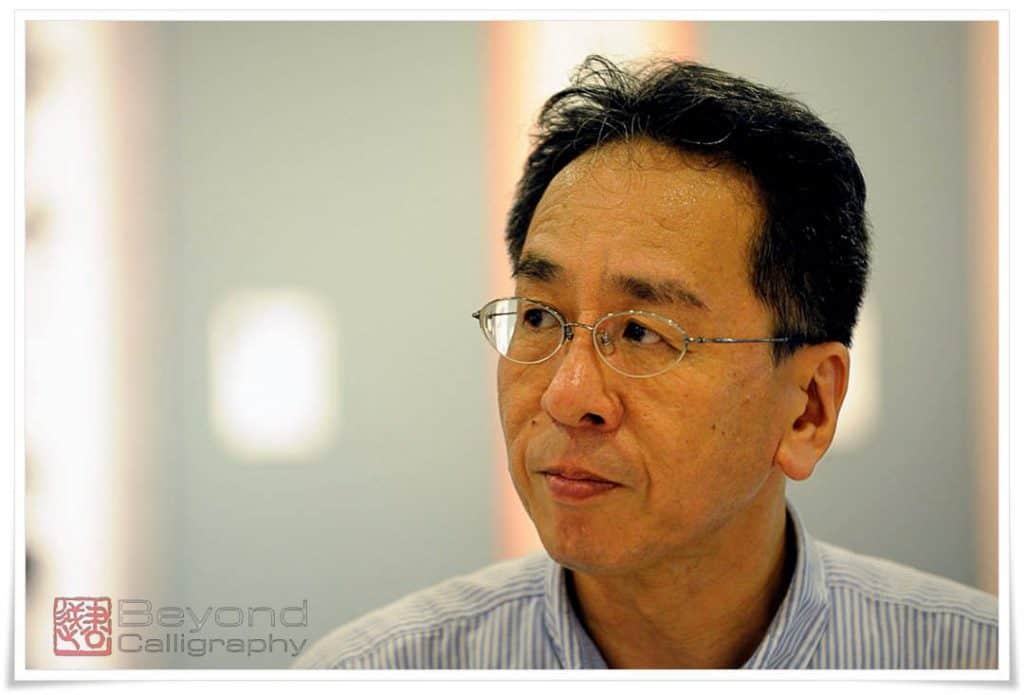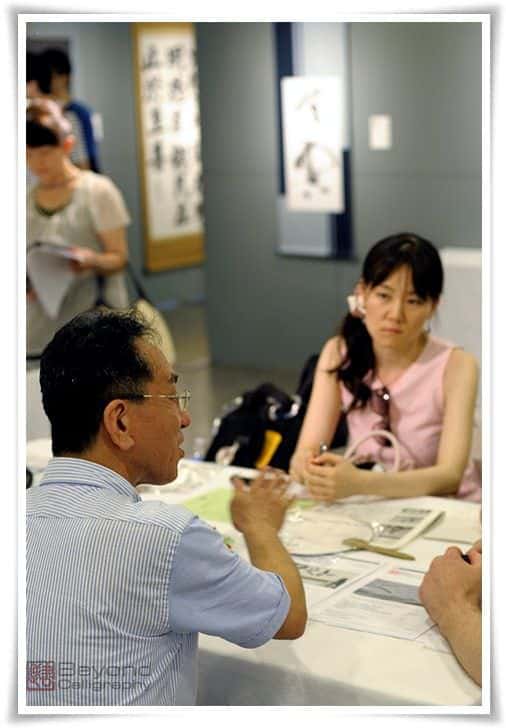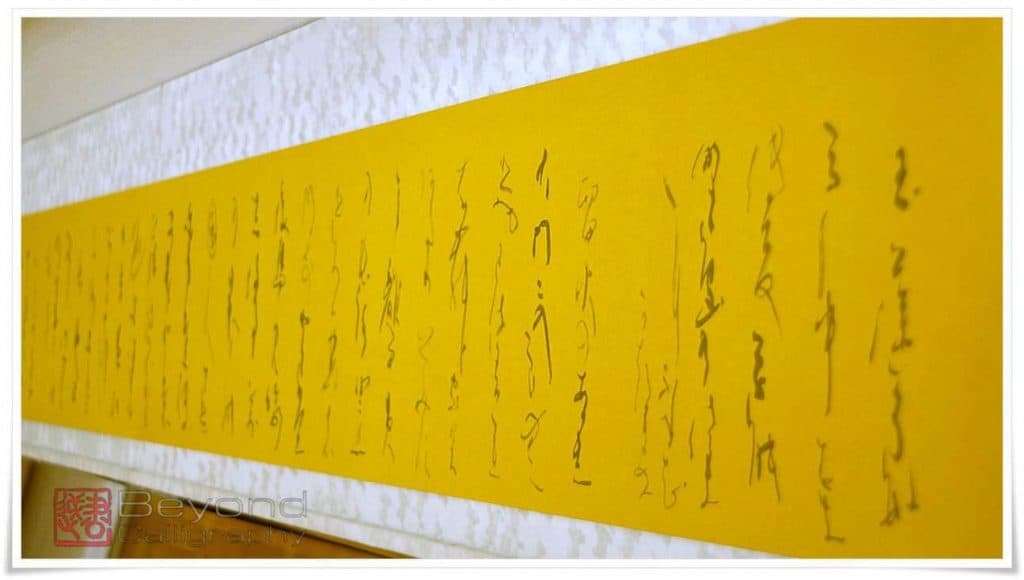日本語版はこちらからご覧になれます。
Sakiko Yanagisawa, as part of the exhibition Yūyū, conducted an interview with Master Usuki Suiun (薄木水雲), Japanese kana master. Master Usuki participates actively as a calligrapher and teacher, mainly in the Kansai area. He is also an administrative officer of The Yomiuri Calligraphy Exhibition (読売書法展理事), 日展入選, an advisor of Shogei-in (書芸院評議員), and a lecturer at the Asahi Culture School (朝日カルチャー講師). Master Usuki’s works are both extremely elegant and at the same time dynamic. You can see the sensitivity and depth in his works. We are very pleased to present an interview with this companionable Master with a beautiful smile.

Sakiko Yanagisawa (S.Y.): What made you begin the study of calligraphy?
Master Usuki (M.U.): When I was five years old, I received a gold award at a local exhibition and was introduced to a teacher in Yokohama. His name was Oonaka Dousetsu (太中道節). He taught me until I turned 28 years old. From the time I was young, I studied Kanji continuously, but when I returned to the Kansai area at the age of 29, I was introduced to kana Master Yamaguchi Nansou (山口南艸) who founded Soushinkai (草心会). I am now a senior editor at Soushinkai. I study under Master Sakamoto Senshuu who is the chairperson of the board of directors of Soushinkai.
※Master Yamaguchi Nansou (山口南艸) (1931 to 2004) was founder of Soushinkai (草心会). When he was young, he learned Chinese characters mainly from the Jin and Tang dynasties. After studying under the now deceased Master Ikeuchi (池内艸舟), he participated in a kana shodou organisation and was active as a pioneer of Daiji kana(大字かな).

(S.Y.):Which do you prefer, Chinese characters or kana?
(M.U.):Now I prefer kana. It is interesting to think about kana because when I am writing it, I have to think of the space, the placement, the composition, the paper, and so on.

(S.Y.):What do you remember about Master Yamaguchi?
(M.U.):The word genius comes to mind. I think that he was a genius as to his ideas, his work, and his personal character.
(S.Y.):What do you think is most important when one does calligraphy?
(M.U.):It is important to study the classics but not to be dependent upon them for inspiration. To create something new is most important.
(S.Y.):What is the purpose of studying calligraphy?
(M.U.):For me calligraphy does not have a purpose, rather it is actually a part of my life, my life itself. It is also my job.

(S.Y.):Do you like teaching?
(M.U.):I do. Teaching is interesting because I learn from students, too.
(S.Y.):Do you often use the Internet for calligraphy?
(M.U.): Mainly, I use it to present my works on the Soushinkai website.
(S.Y.):Do you accept non-Japanese students??
(M.U.):I welcome them as long as they speak Japanese.
(S.Y.):Who are your favorite ancestors?
(M.U.):My favorite would be Fujiwara no Sukemasa (藤原佐理) (944-998). I like the mid- Heian Period when he lived..
(S.Y.):What has interested you most recently?
(M.U.):Old ink, especially light ink.
(S.Y.):What usually inspires you when you do calligraphy?
(M.U.):I look at many works and also look in books until I become inspired.

(S.Y.):Today you wrote calligraphy on the spot; In this case from where did you get inspiration? (On the day of the exhibition, some calligraphers asked visitors to the exhibition for their favorite words and phrases and wrote them on a Japanese paper fan which they received as a souvenir.)
(M.U.):Today we asked visitors to the exhibition to write words on paper. I wanted to get inspiration from what they wrote or from how they looked or what they wore. From those things I was able to sense their personality. Then I tried to write something that fit them.
(S.Y.):Which do you prefer, a big work or small work?
(M.U.):I prefer a large kana work.

(S.Y.):Thank you very much for taking the time to be interviewed.
After the interview, a photograph was taken with Master Yamada. The two Masters studied together at the Japan Society of Calligraphic Education school and have been good friends since then.

I hope that you enjoyed this interview with Master Usuki about the culture of kana.
Anyone is welcome at his school as long as they can speak Japanese. Please visit the wonderful world of kana.
(薄木水雲 教室紹介)
以下の教室にご興味がある方は、連絡先TEL 090-1961-4689にご連絡ください。
- 兵庫県神戸市西区伊川谷町有瀬 – (伊川谷教室)
- 兵庫県神戸市長田区 – (長田教場)
- 兵庫県神戸市東灘区御影 – (御影教場)
《朝日カルチャー講師》
- 兵庫県神戸市中央区 大丸文化教室内 – (朝日カルチャー芦屋)
- 大阪市北区梅田 新サンケイビル5F – (朝日カルチャー梅田)
